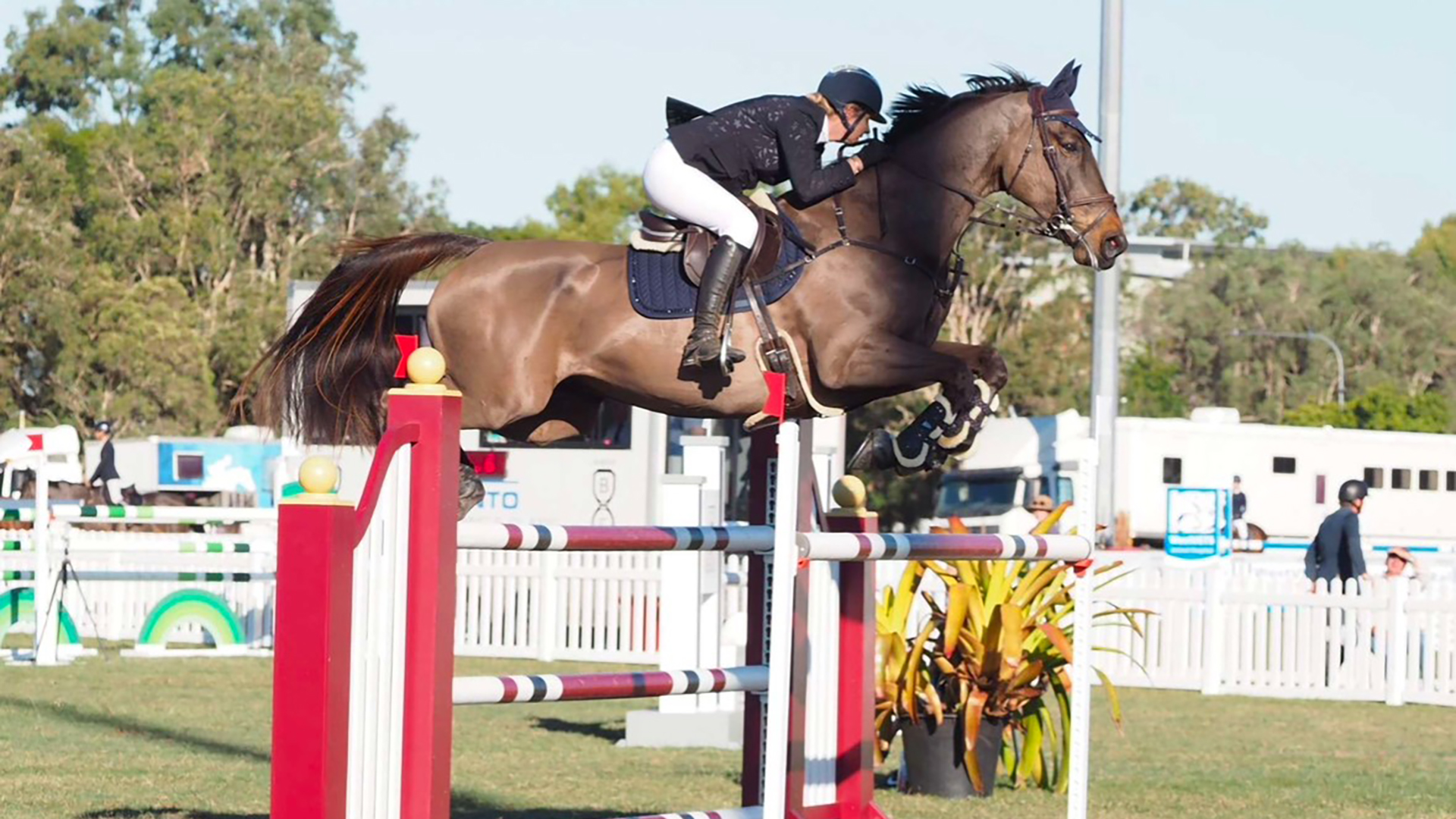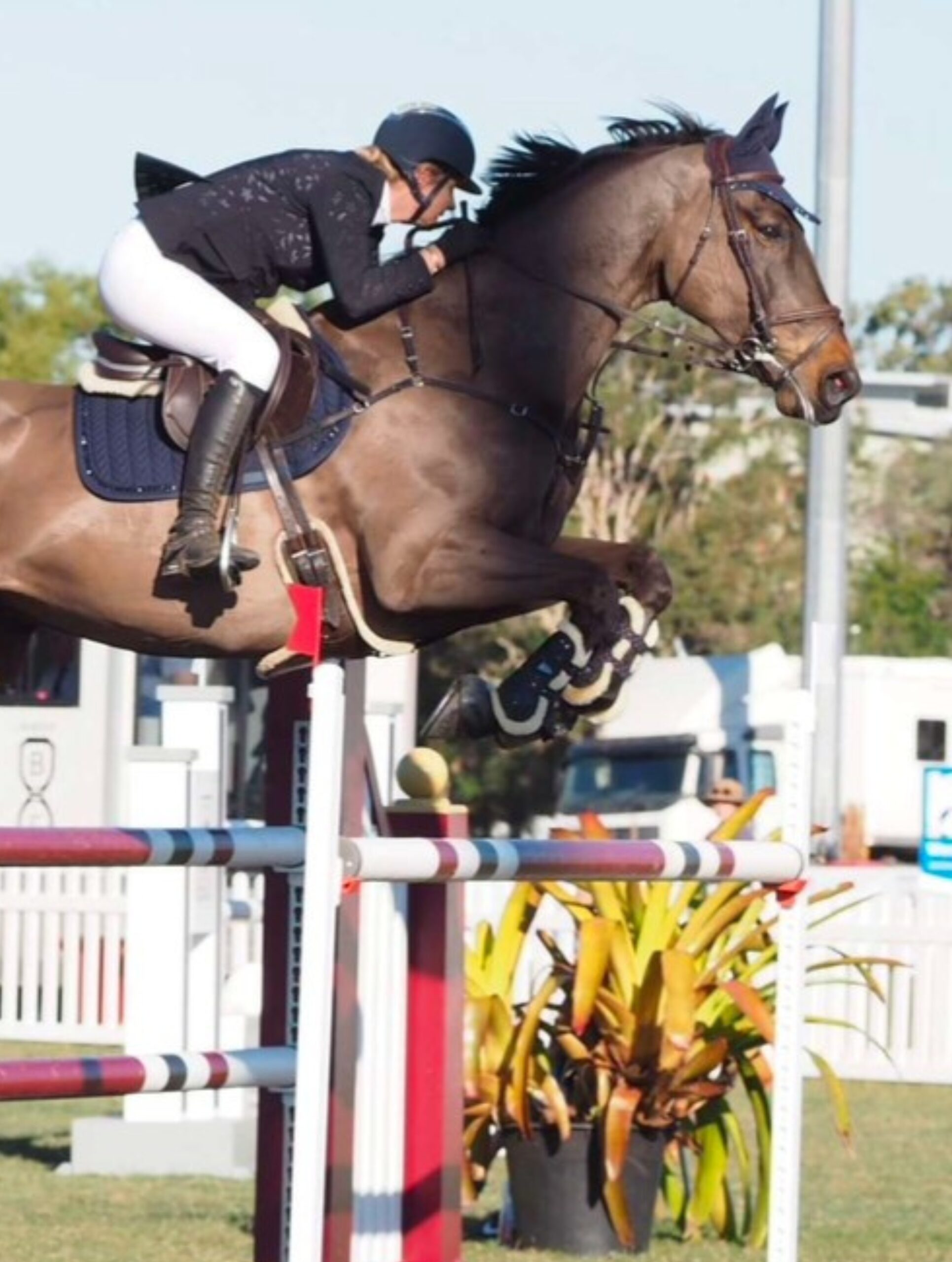A lacklustre coat, lack of energy, loss of muscle tone and weakened immune system were the vague yet worrying symptoms displayed by top show jumper ‘Alan’. Rider Gemma Creighton knew something wasn’t right; however, it wasn’t until a friend mentioned myofibrillar myopathy that the penny dropped.
If you have never heard of myofibrillar myopathy (MFM) as a horse owner, you are not alone. A recently identified muscle disorder, it’s somewhat of an enigma with no known exact cause and no confirmed specific genetic defect – however, its symptoms might sound familiar.
Top show jumper Gemma Creighton was unaware of the disorder when top showjumper Alan first began experiencing periods of massive energy depletion.
“He is a high energy horse with a lot of spunk about him, but he would go through big lows in energy, especially after a run of shows or times of higher workload… and sometimes even after just one competition,” explains Gemma of the horse she manages and rides for owners Linda Huddy and Sally Watkins.
A different disease to MFM in humans and generally much less severe, MFM in horses has to date only been identified in Warmbloods and endurance Arabians, and likely represents an interaction between the environment, a complex number of genes, and diet.

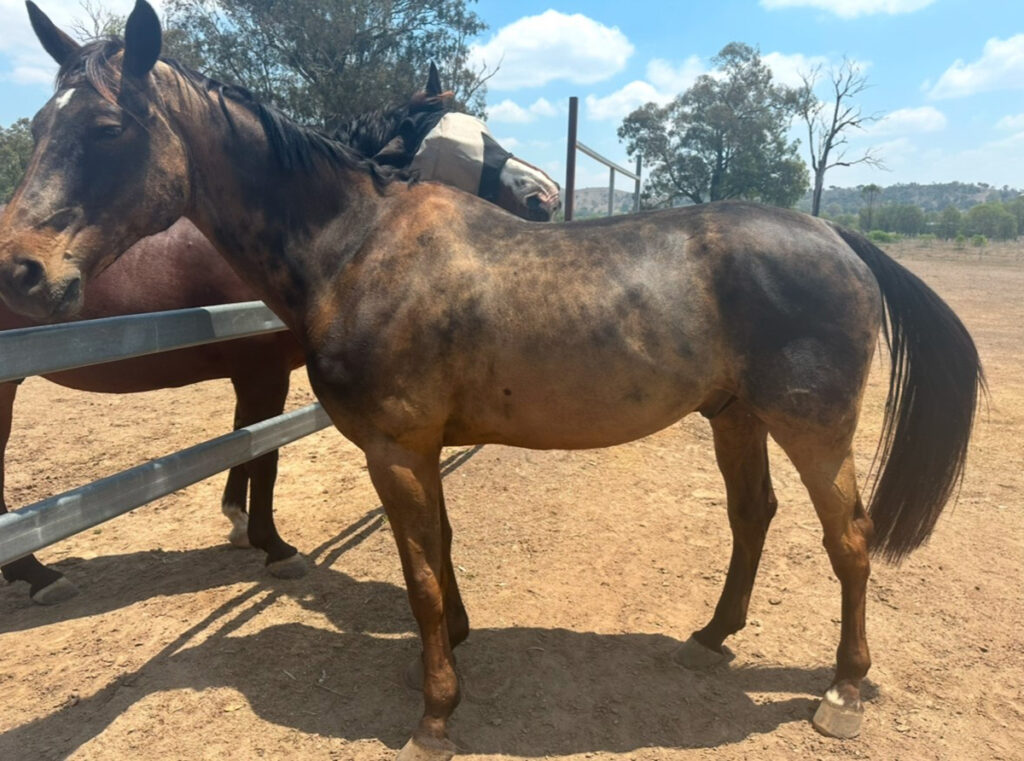
Alan’s lacklustre coat was very evident prior to his diagnosis. Image supplied.
The other tell-tale sign that something was going on was Alan’s immune system wasn’t where it should be. “He was first to catch any little virus going around the competitions and was the last to recover from it. That would also bring on another low energy, muscle depletion period,” explains Gemma.
After trying many different feeds and supplements and running a couple of blood tests with no luck, it was ultimately a tip-off from a friend that set them down the right diagnosis path.
“A friend of ours, who is a very knowledgeable horse person and competes up to World Cup level, noticed the change in him. He had recently had a horse he had been working with diagnosed with MFM, and so he was telling us about the disorder, and it just ticked so many of the boxes that we had been struggling with,” recalls Gemma of that lightbulb moment.
Unfortunately, diagnosing MFM is not as straightforward as a blood test.
“Many muscle disorders have a genetic basis and can be diagnosed by a genetic test – such as PSSM1 – but this is not the case with PSSM2 or MFM, despite what some commercial laboratories might say!” explains Dr Huntington.
“You either need a positive response to a treatment trial or a muscle biopsy. As the muscle biopsy can now be performed with a needle biopsy probe, the horse can go back to work the next day. If you take the biopsy after starting treatment it may lead to a false negative result.”
COMBINED APPROACH TO MANAGEMENT
Once she realised MFM could be the issue, Alan was started on MFM Pellet – a product developed in 2020 by Kentucky Equine Research (KER) in conjunction with Professor Stephanie Valberg (DVM PhD) a to help manage the condition.
“It made a big difference. He still struggled a little keeping up his fitness enough for the big classes so we decided to get the muscle biopsy done and know for sure what he had and how we could best help him, which is when he came back with the positive results for MFM,” she explains, adding that owners Linda and Sally were supportive every step of the way and just as keen as she was to pinpoint and treat Alan’s affliction.
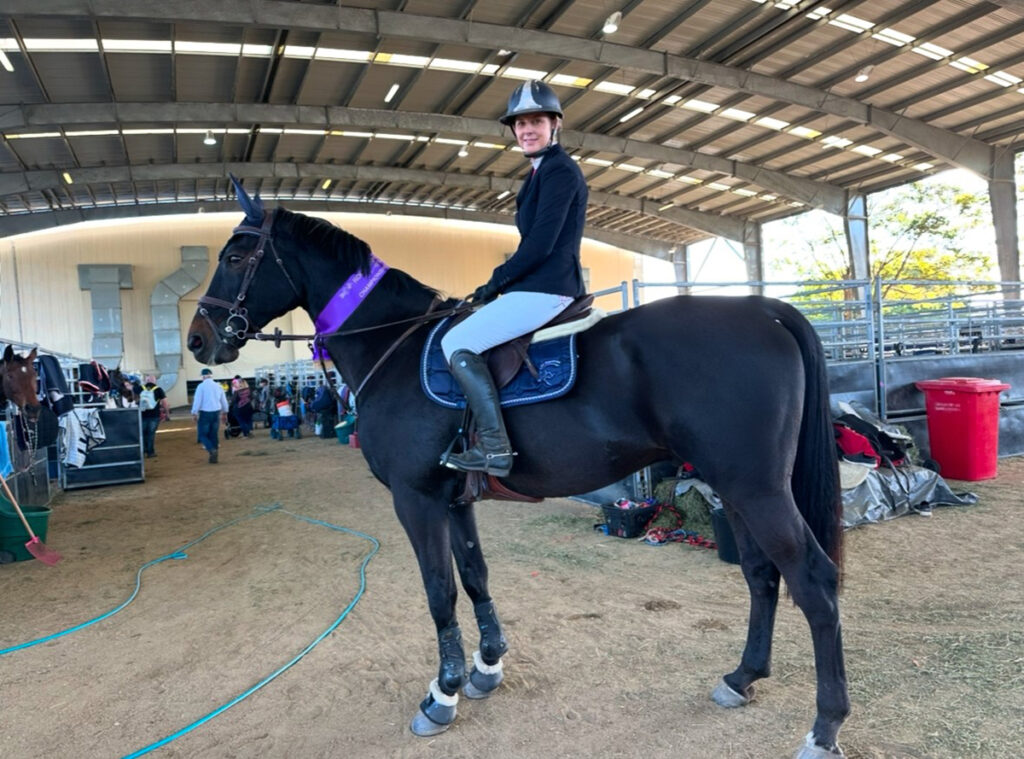
A combined approach to treatment, including the use of KER’s MFM Pellet, has made a huge difference to Alan’s appearance. Image supplied.
MFM Pellet was released in Australia in 2023 and is a supplement that contains high levels of amino acids, including the branched-chain amino acids (BCAA) leucine, isoleucine, and valine to promote muscle strength and development – as well as a special form of the amino acid cysteine that is readily absorbed in horses.
“Cysteine is a key component of many antioxidants, particularly those that are low in MFM horses,” explains Dr Huntington. “Leucine and other BCAAs stimulate protein synthesis in the muscle post-exercise, which is beneficial to MFM horses. Dr Valberg’s research shows this supplement is the best means to treat horses with MFM when combined with feed and exercise changes.
“In terms of diet, rations should focus on providing quality protein and specific amino acids to aid in making the proteins necessary to rebuild the contractile proteins (proteins that cause muscle fibres to contract),” continues Dr Huntington, noting that concentrates for MFM horses should include higher levels of protein (12-16% crude protein) containing high-quality amino acids; moderate levels of NSC (non-structural carbohydrates) (20-30%); and fat (4-6%).
“Additionally, since oxidative stress is likely to be involved in the degenerative process, antioxidants or precursors of antioxidants are important to support the mitochondria,” he adds.
Dr Huntington explains that for good doers or easy keepers, a ration balancer pellet that contains protein, vitamins, minerals – such as KER All-Phase pellet – may suffice. For horses that need extra energy, a feed such as Barastoc KER Low GI Cube is suitable and has been used as part of successful feed programs for horses with MFM.
“Alan’s workload was already as recommended, and he was already on the KER MFM pellet,” notes Gemma of the horse’s management at time of diagnosis. “So we continued that, but we changed his diet to the Barastoc KER Low GI Cube, which is best suited for his nutritional needs for his condition, combined with his chaff and hay that he was already getting.”
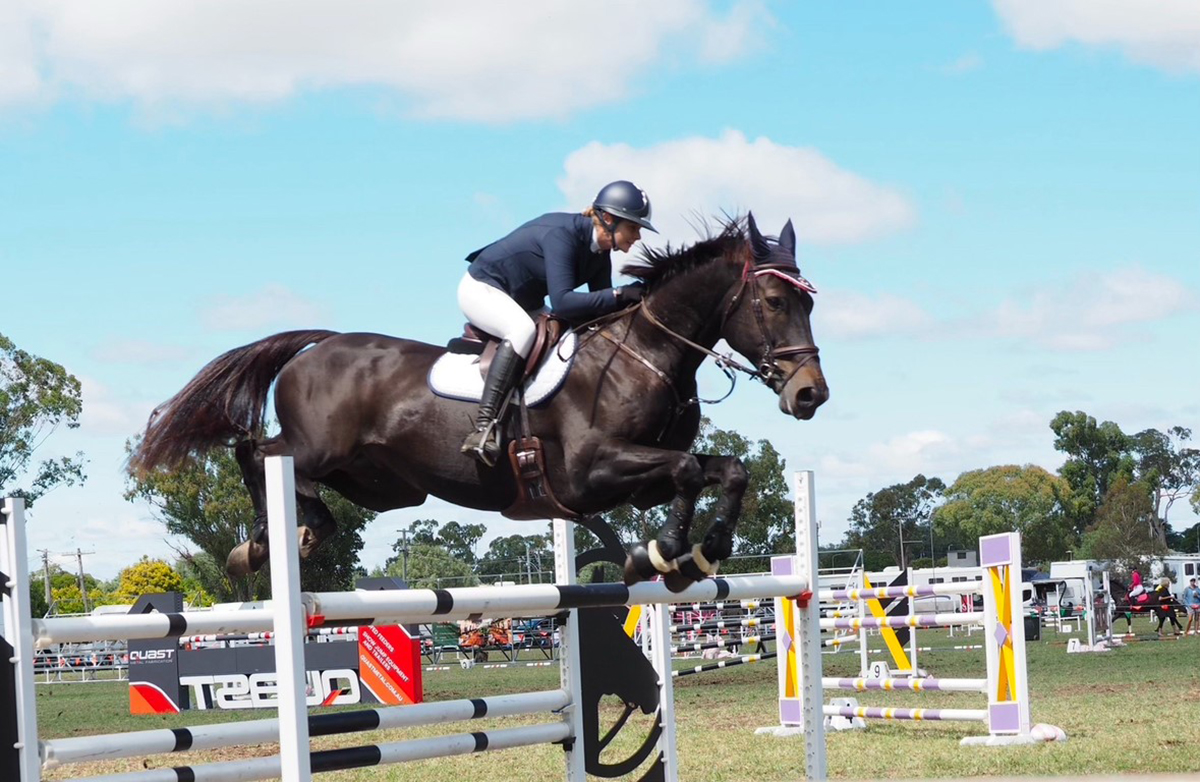
Alan’s energy in the showjumping arena is also back! Image supplied.
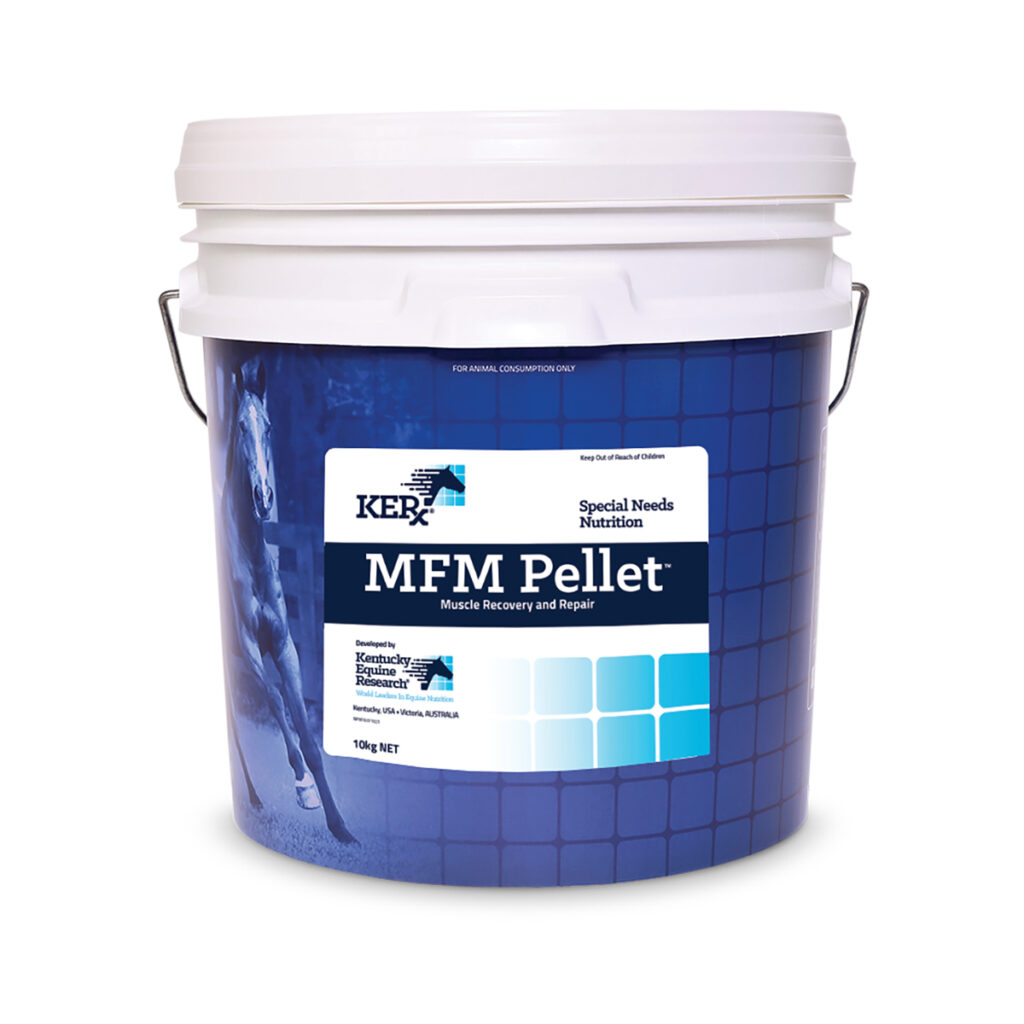
Alongside MFM Pellet, Gemma says she also added several supplements to Alan’s diet. “We added KER’s EO-3, Nano-Q10, and then Nano-E for any time he is travelling or competing. We also keep him on an immune support supplement to help him keep that up.”
Over time, this combination of correct supplementation, exercise and diet has led to a vast improvement in Alan’s condition and energy.
“His lovely coat colour came straight back, which was the first sign that we were on the right track for covering his needs, and then his muscles finally started to build back up again. It’s a huge relief.”
MFM pellet is available from veterinarians. Research has shown that horses with MFM typically take four to six weeks to respond to changes in exercise, diet and supplementation.
For more information, talk to your vet or head to www.equinews.com and search ‘MFM’. EQ
